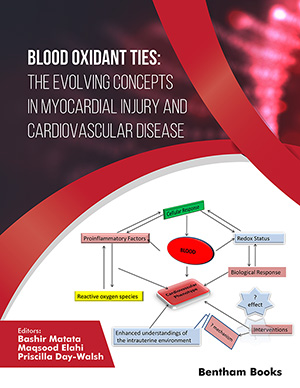Abstract
Background: Insulin resistance (IR) is a condition characterized by reduced sensitivity of body tissues to insulin, leading to impaired regulation of downstream metabolic pathways and elevated blood glucose levels. Diets rich in fructose have been proven to cause insulin resistance in test rats, resulting in decreased insulin sensitivity, particularly in the liver, and compromised disposal of glucose from the body. In the search for effective treatments, Plant-derived formulations have gained popularity because to their ability for treating a variety of ailments. One such plant is Punica granatum Linn. from the Punicaceae family, which has long been used in the treatment of diabetes and its consequences. This study investigates the insulin-resistant activity of an extract from Punica granatum leaves. The study goal is to assess the possible protective role of Punica granatum against insulin resistance through various analyses, including serum glucose and insulin levels, lipid profile assessment, measurement of liver enzymes (ALP, SGOT, SGPT), and histopathological examination of liver sections.
Methods: The study involves several key methods to evaluate the insulin-resistant activity of Punica granatum extract in high fructose diet induced insulin resistance animal model. The extract was administered orally to the experimental animals. These methods include the measurement of serum glucose and serum insulin levels, analysis of the lipid profile, quantification of liver enzymes such as ALP, SGOT, and SGPT, and a detailed histopathological examination of liver tissue sections. These analyses collectively provide insights into the impact of Punica granatum extract on insulin resistance and related metabolic parameters.
Results: Findings of this study provide insight on the possible benefits of Punica granatum extract on insulin resistance. Through the assessment of serum glucose and insulin levels, lipid profile analysis, and measurement of liver enzymes, the study elucidates the impact of the extract on key metabolic indicators. Additionally, the histopathological examination of liver sections provides visual insights into the structural changes that may occur as a result of the treatment.
Conclusion: In conclusion, this study highlights the ability of Punica granatum extract as a candidate for addressing insulin resistance. The findings suggest that the extract may have a protective role against insulin resistance, as evidenced by improvements in serum glucose and insulin levels, lipid profile, liver enzyme levels, and histopathological characteristics. Further research and investigations are warranted to fully understand the mechanisms underlying these observed effects and to validate the potential of Punica granatum extract as a therapeutic option for managing insulin resistance and its associated complications.
Keywords: Insulin resistance, high fructose, oral glucose tolerance, metabolic syndrome, Punica granatum, oxidative stress.
[http://dx.doi.org/10.1152/ajpregu.2000.279.4.R1334] [PMID: 11004002]
[http://dx.doi.org/10.1155/2015/385976] [PMID: 26504474]
[http://dx.doi.org/10.1113/JP277767] [PMID: 30950506]
[http://dx.doi.org/10.3390/nu9091026]
[http://dx.doi.org/10.3390/nu9040335] [PMID: 28353649]
[http://dx.doi.org/10.1016/j.fct.2010.04.021] [PMID: 20412828]
[http://dx.doi.org/10.1007/s12010-017-2461-0] [PMID: 28353042]
[http://dx.doi.org/10.1016/j.scienta.2009.11.008]
[http://dx.doi.org/10.1186/s40816-020-00202-y]
[http://dx.doi.org/10.2174/187153008784534330] [PMID: 18537696]
[http://dx.doi.org/10.4239/wjd.v6.i3.456] [PMID: 25897356]
[http://dx.doi.org/10.3389/fphar.2013.00177] [PMID: 24454289]
[http://dx.doi.org/10.22159/ijcpr.2017v9i4.1159]
[http://dx.doi.org/10.5772/intechopen.75962]
[http://dx.doi.org/10.1016/j.metabol.2008.01.013]
[http://dx.doi.org/10.1186/1758-5996-4-16]
[http://dx.doi.org/10.1016/j.lfs.2016.06.014] [PMID: 27350161]
[http://dx.doi.org/10.12659/MSM.883978] [PMID: 23867834]
[http://dx.doi.org/10.1007/BF00280883] [PMID: 3899825]
[http://dx.doi.org/10.1210/jcem.85.7.6661] [PMID: 10902785]
[http://dx.doi.org/10.1007/BF00925739]
[http://dx.doi.org/10.1172/JCI77812] [PMID: 26727229]
[http://dx.doi.org/10.1186/1743-7075-7-82] [PMID: 21050460]
[http://dx.doi.org/10.1210/me.2013-1137] [PMID: 24030250]
[http://dx.doi.org/10.19082/1832] [PMID: 26955456]
[PMID: 20872313]
[PMID: 31089370]
[http://dx.doi.org/10.3390/nu14081665] [PMID: 35458227]
[http://dx.doi.org/10.1016/j.lfs.2007.08.045]
[http://dx.doi.org/10.17485/ijst/2008/v1i6.5]
[http://dx.doi.org/10.1016/j.amjmed.2007.01.003] [PMID: 17320517]
[http://dx.doi.org/10.3390/nu8050305] [PMID: 27213439]
[http://dx.doi.org/10.3164/jcbn.40.163] [PMID: 18398493]
[http://dx.doi.org/10.4103/0253-7613.93853] [PMID: 22529479]
[http://dx.doi.org/10.3390/nu12123762]
[http://dx.doi.org/10.1097/MOL.0b013e3282f2b24a] [PMID: 18196982]
[http://dx.doi.org/10.3390/ijms22168590] [PMID: 34445300]
[http://dx.doi.org/10.2337/db11-1511] [PMID: 22517657]
[http://dx.doi.org/10.3390/nu9040405] [PMID: 28425939]
[http://dx.doi.org/10.1042/BSR20190124] [PMID: 30804231]
[PMID: 9644037]
[http://dx.doi.org/10.1038/sj.ijo.0801209] [PMID: 10849588]
[PMID: 16278749]
[http://dx.doi.org/10.1093/ajcn/49.6.1155] [PMID: 2658534]
[http://dx.doi.org/10.3390/ijms22157797] [PMID: 34360563]
[http://dx.doi.org/10.1186/1476-511X-10-20] [PMID: 21261970]
[PMID: 31217881]
[http://dx.doi.org/10.1371/journal.pone.0264215] [PMID: 35196347]
[http://dx.doi.org/10.1016/j.tem.2011.04.007] [PMID: 21616678]
[http://dx.doi.org/10.3389/fimmu.2012.00240] [PMID: 22891067]
[http://dx.doi.org/10.1111/brv.12178] [PMID: 25740151]
[http://dx.doi.org/10.3390/nu14061127]
[http://dx.doi.org/10.1155/2015/306326] [PMID: 26090514]































